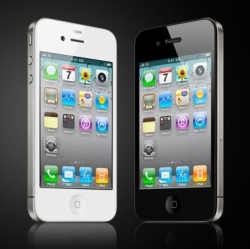
“The 3-D scanning technologies on the market today are either very expensive or unable to do high-resolution image capture, so they can’t be used for applications where details are important,” said Gabriel Taubin, a professor in Brown’s School of Engineering. For example, applications like 3-D printing.
Most of the high-quality 3-D scanners capture images using a technique known as structured light. A projector casts a series of light patterns on an object, while a camera captures images of the object. The way these patterns deform when striking surfaces allows the structured-light 3-D scanner to calculate the depth and surface configurations of the objects in the scene, creating a 3-D image.
The limitation with current 3-D depth scanners is that the pattern projector and the camera have to precisely synchronized, which requires specialized and expensive hardware.
The problem in trying to capture 3-D images without synchronization is that the projector could switch from one pattern to the next while the image is in the process of being exposed. As a result, the captured images are mixtures of two or more patterns.
A second problem is that most modern digital cameras use a rolling shutter mechanism. Rather than capturing the whole image in one snapshot, cameras scan the field either vertically or horizontally, sending the image to the camera’s memory one pixel row at a time. As a result, parts of the image are captured a slightly different times, which also can lead to mixed patterns.
The algorithm Taubin and his students have developed enables the structured light technique to be done without synchronization between projector and camera. That means an off-the-shelf camera can be used with an untethered (unconnected by a wire) structured light flash. The camera just needs to have the ability to capture uncompressed images in burst mode (several successive frames per second), which many DSLR cameras and smartphones can do.
After the camera captures a burst of images, the algorithm calibrates the timing of the image sequence using the binary information embedded in the projected pattern. Then it goes through the images, pixel by pixel, to assemble a new sequence of images that captures each pattern in its entirety. Once the complete pattern images are assembled, a standard structured light 3D reconstruction algorithm can be used to create a single 3-D image of the object or space.
The researchers presented a paper describing the algorithm last month at the SIGGRAPH Asia computer graphics conference. In their paper, the researchers showed that the technique works just as well as synchronized structured light systems. During testing, the researchers used a fairly standard structured light projector, but the team envisions working to develop a structured light flash that could eventually be used as an attachment to any camera.
